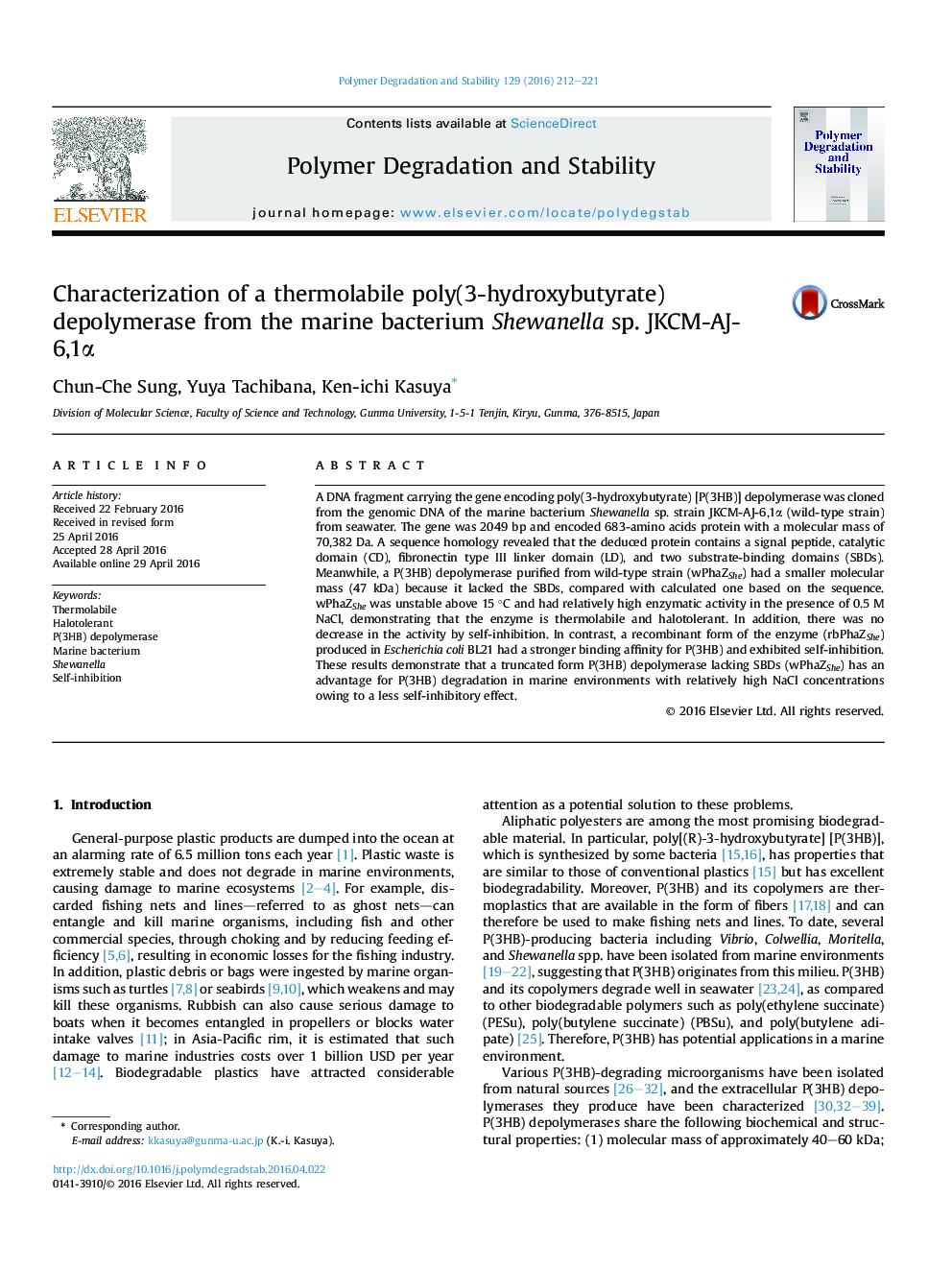| Article ID | Journal | Published Year | Pages | File Type |
|---|---|---|---|---|
| 5201118 | Polymer Degradation and Stability | 2016 | 10 Pages |
Abstract
A DNA fragment carrying the gene encoding poly(3-hydroxybutyrate) [P(3HB)] depolymerase was cloned from the genomic DNA of the marine bacterium Shewanella sp. strain JKCM-AJ-6,1α (wild-type strain) from seawater. The gene was 2049 bp and encoded 683-amino acids protein with a molecular mass of 70,382 Da. A sequence homology revealed that the deduced protein contains a signal peptide, catalytic domain (CD), fibronectin type III linker domain (LD), and two substrate-binding domains (SBDs). Meanwhile, a P(3HB) depolymerase purified from wild-type strain (wPhaZShe) had a smaller molecular mass (47 kDa) because it lacked the SBDs, compared with calculated one based on the sequence. wPhaZShe was unstable above 15 °C and had relatively high enzymatic activity in the presence of 0.5 M NaCl, demonstrating that the enzyme is thermolabile and halotolerant. In addition, there was no decrease in the activity by self-inhibition. In contrast, a recombinant form of the enzyme (rbPhaZShe) produced in Escherichia coli BL21 had a stronger binding affinity for P(3HB) and exhibited self-inhibition. These results demonstrate that a truncated form P(3HB) depolymerase lacking SBDs (wPhaZShe) has an advantage for P(3HB) degradation in marine environments with relatively high NaCl concentrations owing to a less self-inhibitory effect.
Related Topics
Physical Sciences and Engineering
Chemistry
Organic Chemistry
Authors
Chun-Che Sung, Yuya Tachibana, Ken-ichi Kasuya,
